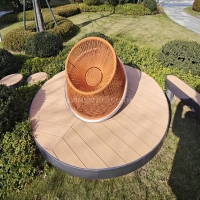Welcome to the website for landscape facilities products and knowledge.
What are the load distribution characteristics of trestle-based landscape tables?
Trestle-based landscape tables are a popular choice for outdoor settings due to their robust design and aesthetic appeal. One of the key aspects of these tables is their load distribution characteristics, which determine their stability and durability.
The trestle design, featuring a central support structure with legs connected by a horizontal beam, ensures even weight distribution across the table surface. This configuration minimizes stress on any single point, enhancing the table's ability to withstand heavy loads. The load is typically transferred from the tabletop to the trestle legs, which then disperse it evenly to the ground.
Factors such as material choice (e.g., wood, metal, or composite), trestle spacing, and leg thickness significantly influence load distribution. For instance, wider trestle bases provide better stability for larger tables, while thicker legs can support heavier weights. Additionally, the tabletop's rigidity plays a crucial role in preventing sagging or uneven weight distribution.
Understanding these characteristics is essential for selecting or designing trestle-based landscape tables that meet specific weight capacity and longevity requirements, making them ideal for both residential and commercial outdoor spaces.
Related search:

Recommendation
Swivel chair-Specialty steel structure woven rattan leisure chair with rotatable design